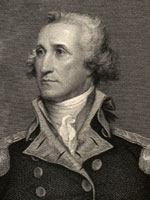The Era of George Washington
From the Gilder Lehrman Institute of American History website:
"Professor Gordon Wood investigates George Washington's contributions to the creation of the American republic. The bicentennial of Washington's death in 1999 sparked a reassessment of this extraordinary man and his times. He was commander in chief of the Revolutionary army, a leader in the formation of the Constitution of 1787, and the first president of the new United States. Despite these great accomplishments, he remains strangely distant and inaccessible to us in the early twenty-first century. This brief but intensive course helps explain the sources and meaning of Washington's greatness."

